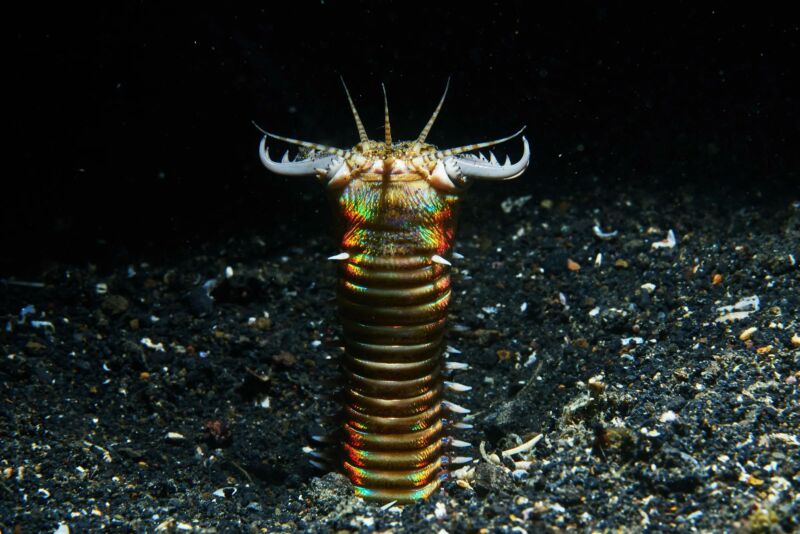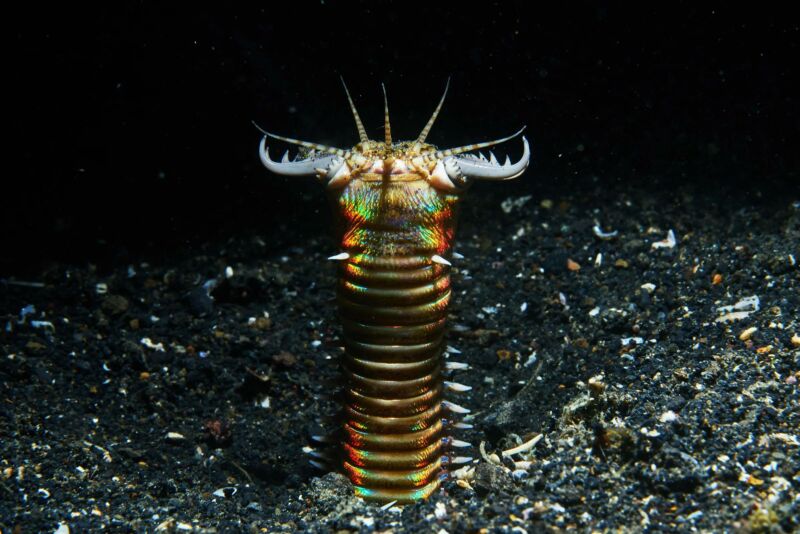
Enlarge (credit: Getty Images)
Not to toot my own horn, but I know a thing or two about bizarre animals. And I can tell you without a hint of doubt that the bobbit worm is by far the most bizarre. Growing to 10 feet long, the worm digs a burrow in the seafloor, leaving only its bear trap of a mouth sticking out. When a fish approaches, the bobbit worm shoots out of its burrow with astonishing speed, snapping its jaws around its prey. With violent tugs, the worm then drags the victim down into its lair, where it eats the fish alive. (Oh, there’s video.)

Now scientists say they’ve found evidence that an ancestor of the bobbit worm may have been menacing fish 20 million years ago. Writing today in the journal Scientific Reports, the researchers argue that hundreds of fossilized worm burrows, found in what is now Taiwan, show telltale signs of struggle. They haven’t found the worms themselves, mind you, as boneless critters like worms (known as invertebrates, because they lack spinal columns) very rarely fossilize. Instead, they discovered trace fossils, geological features that hint at the behavior of ancient animals, in sandstone that was once a seafloor.
“This is, we believe, the first time that we’ve actually found a trace fossil that shows how invertebrates like worms were feeding on vertebrates,” says National Taiwan University sedimentologist Ludvig Löwemark, co-author of the new paper. “Because, typically, what we find in the sedimentary record is animals that are moving through the sediment.” Invertebrates, for instance, might dig tunnels through the sea bottom and pump water through their burrows, filtering out particles. “But this is a record of a much more active behavior,” he continues. “The worms were actually hiding in the sediment, jumping out, catching their prey, and then dragging this prey down into the sediment.”





